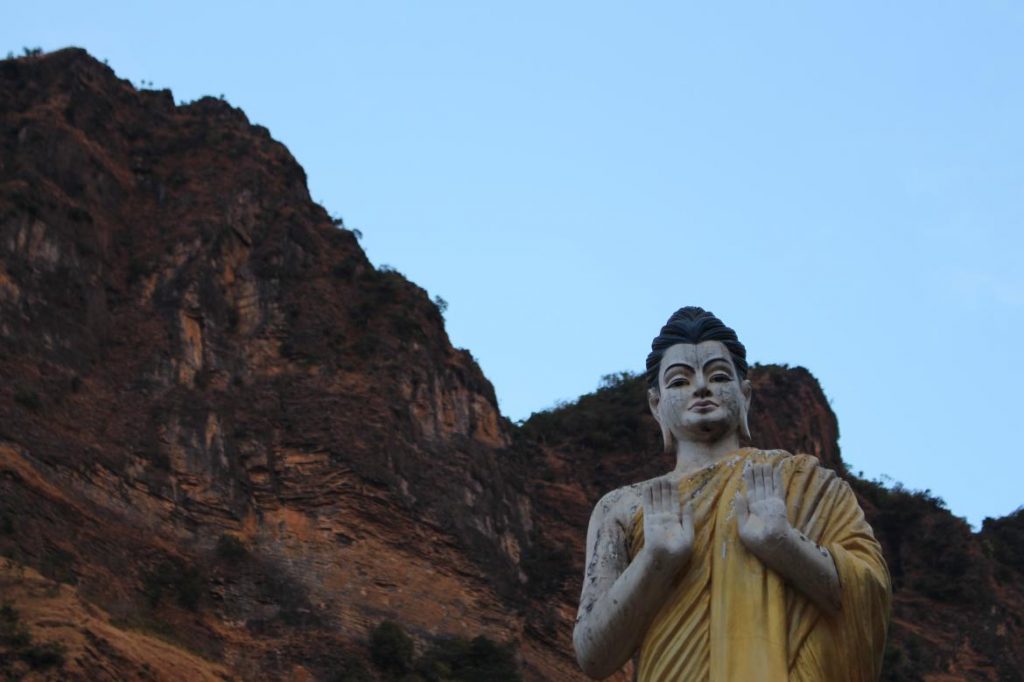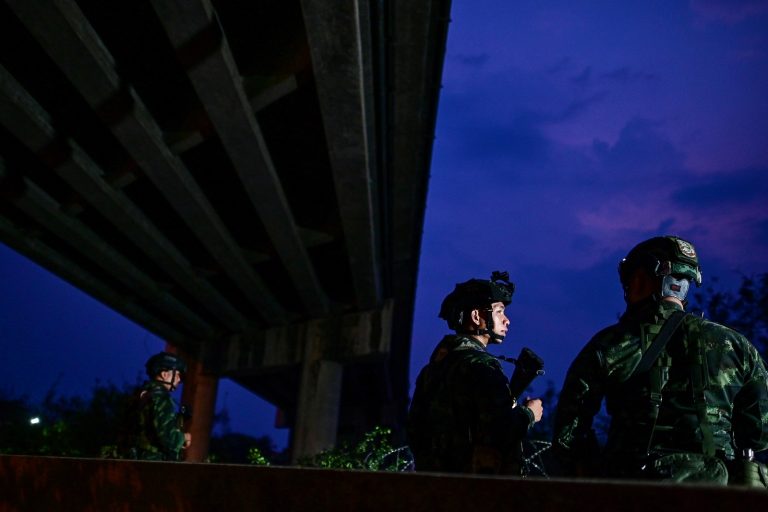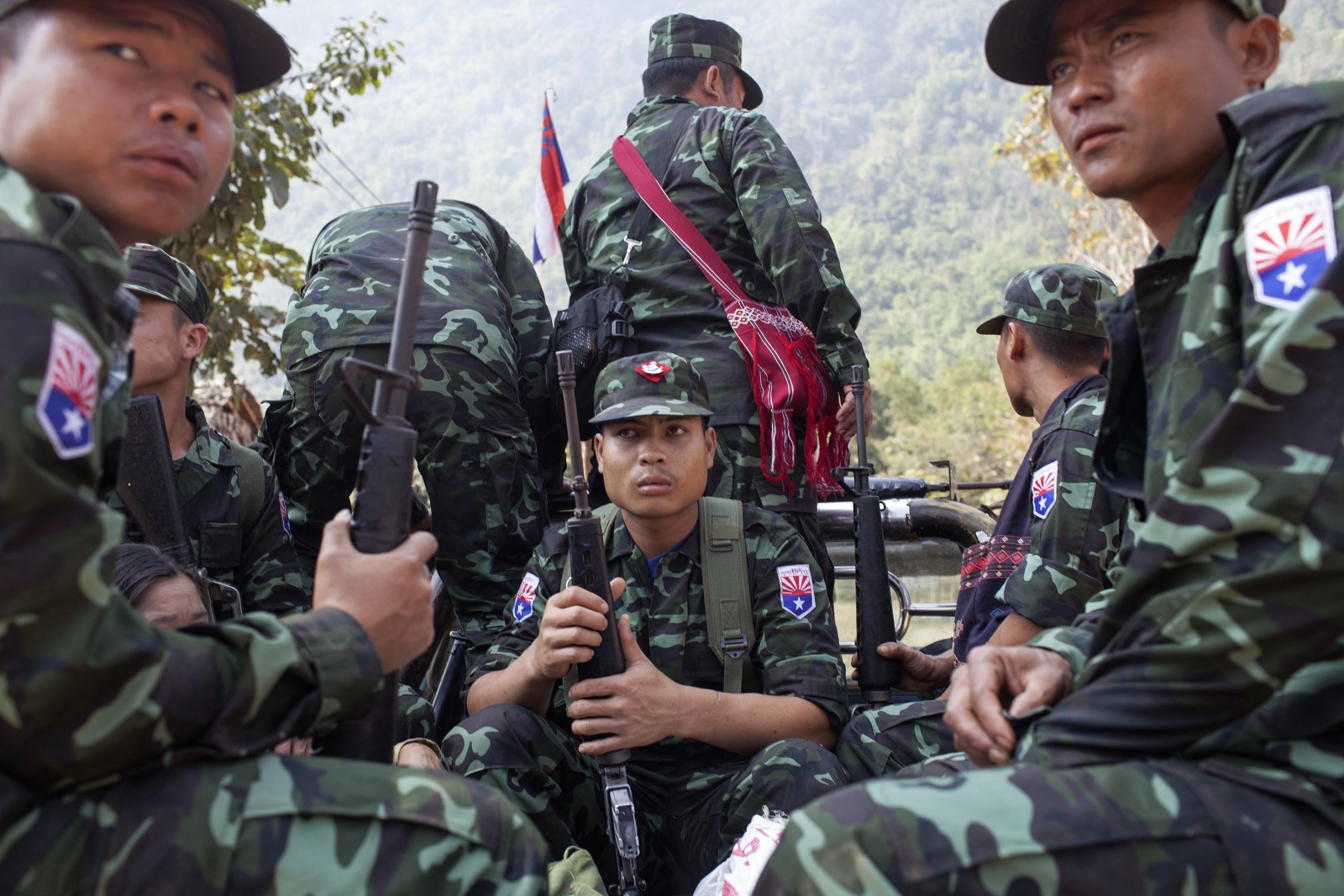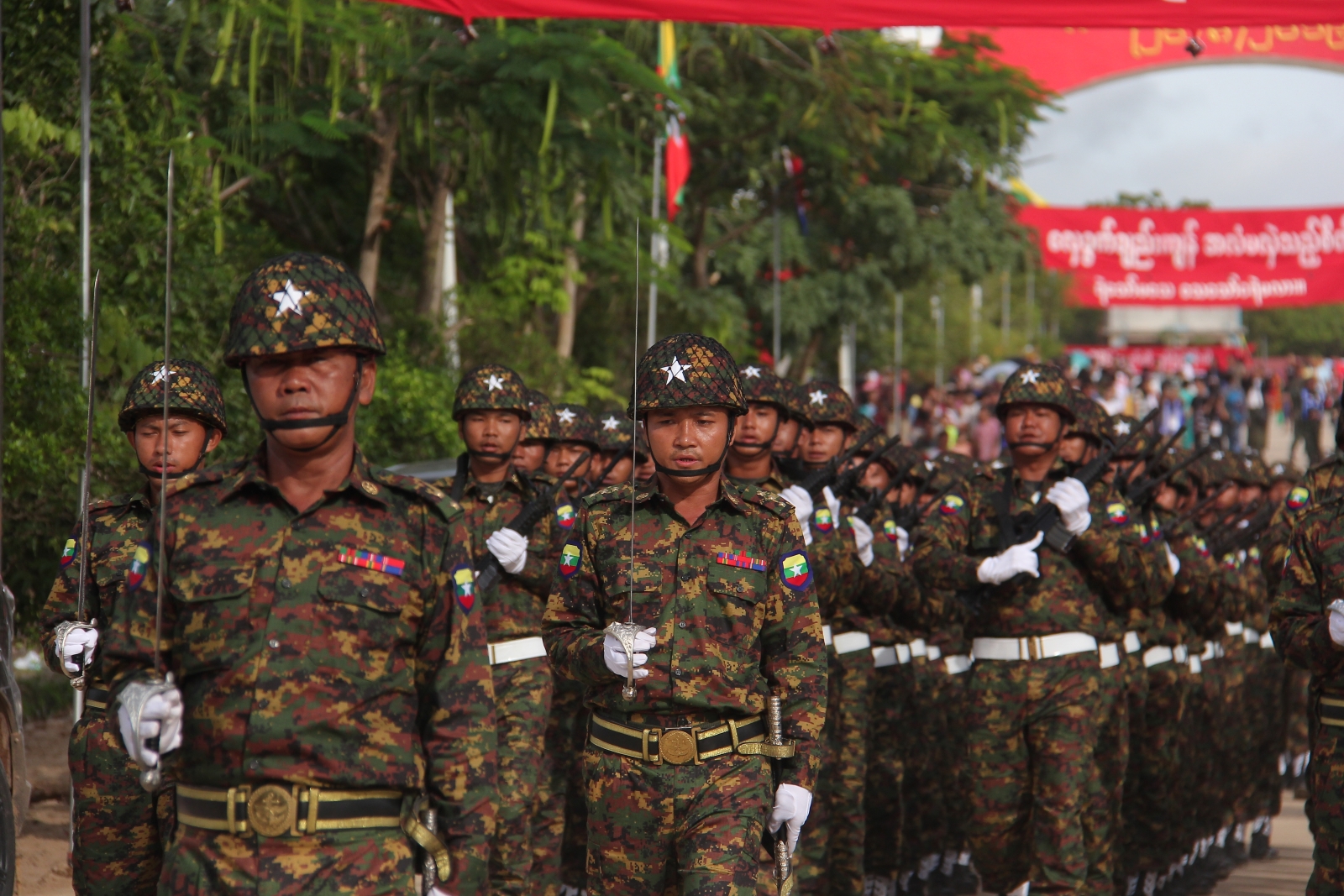A controversial monk’s recent stupa-building spree has heightened religious tensions in Kayin State, but cooperation between senior monks and the military will be needed to bring his campaign to an end.
By SITHU AUNG MYINT | FRONTIER
In recent days a Buddhist monk, Myaing Gyi Ngu Sayadaw, has sparked controversy by building small pagodas in Kayin State inside church compounds and near a mosque.
Media reports indicate that the sayadaw has ignored requests from local government officials, senior sayadaws and the leaders of the Karen National Liberation Army – the armed wing of the Karen National Union – to cease his construction projects.
Thanks to the patience and tolerance of Christians, Muslims and Buddhists, however, no significant problems have arisen. But there are widespread concerns that if Myaing Gyi Ngu Sayadaw continues with his crusade, the situation may escalate. Nobody knows what will happen next.
For many, though, the first question is: who is Myaing Gyi Ngu Sayadaw? And why is he taking the provocative step of establishing stupas in close proximity to other religious sites?
Support more independent journalism like this. Sign up to be a Frontier member.
Myaing Gyi Ngu Sayadaw first gained a reputation as a Buddhist missionary in remote – and contested – areas of Kayin State. Around 1990, he built a pagoda on a mountain range not far from KNU strongholds at Manerplaw and Methewaw. The pagoda was built in a war zone and prompted fierce debate among senior KNU officials as to how it should be handled.
Later, religious divisions emerged within the KNU between Christians, who held most of the leadership roles, and lower-ranking Buddhist Kayin officers. Manepalaw and Methewaw, where KNLA Brigade 7 was stationed, were the focus of this dispute, which was to have massive implications for the future of the KNU.
Eventually the Buddhist Kayin officers and soldiers broke away from KNLA and reunited under the umbrella of Myaing Gyi Ngu Sayadaw. The then-military government helped them to establish the Democratic Karen Buddhist Army.
In cooperation with the Tatmadaw, the DKBA launched offensives on KNLA forces. In these brutal battles that pitted ethnic Kayin against each other, DKBA soldiers were accused of shooting at refugees and burning camps on the Thai side of the border where KNU families had taken refuge. The KNLA forces suffered a severe defeat and lost their Manerplaw headquarters, Methawaw camp and many other camps – all positions that the Tatmadaw had spent decades trying to capture, without success.
Today, most of the DKBA has been transformed into a Border Guard Force and absorbed into the Tatmadaw. But the Myaing Gyi Ngu area, where the sayadaw’s monastery is located, is different. Here, the DKBA is still in control, albeit with the permission of the Tatmadaw.
Myaing Gyi Ngu Sayadaw has been building small pagodas in this area, both on the tops of mountains and on the plains. He has built a pagoda at Methawaw camp, on the bank of the Thaungyin River, a tributary of the Than Lwin that is also known as the Moei. Photos show he is even building a miniature replica of Kuthodaw Pagoda. The original, located at the foot of Mandalay Hill, contains the entire Buddhist canon inscribed on marble slabs.
But some of these projects have been deeply controversial, and could possibly incite religious unrest.
In September last year, he oversaw the construction of a stupa inside the compound of a church in Mezaing village, Hpa-an township, Kayin State. This prompted protests from the Myanmar Baptist Convention and the former minister for religious affairs, U Soe Win, promised to intervene, but apparently never did so.
Then in late April, he built another stupa inside a church compound – this time in Kayin State’s Hlaingbwe township.
In another recent case, the sayadaw built a stupa near a mosque in the town of Shwe Gun, which has a significant Muslim population.
The area’s history has shown that religious tension can easily spill over into bloodshed. In 1982, communal clashes between Buddhists and Muslims broke out in Mon and Kayin states, including Shwe Gun. The conflict was so violent that some Muslims went underground and joined the KNU. Armed and trained by the KNU, these Muslim forces later fought against the Tatmadaw.
It is not unusual for a prominent Buddhist monk to encourage or sponsor the building of stupas. However, it is hard to understand why one would do so near sites of other religions.
Because Myaing Gyi Ngu Sayadaw has always been protected by DKBA forces stationed in the Myaing Gyi Ngu area, the police and civil administration will not be able to handle this case. The KNU should also not interfere given the history of violence between the KNLA and DKBA.
Asked about the issue by the BBC, the highly respected Sayadaw Ashin Sandardika said, “If one wants to build a pagoda in the legal territory of another religion, he should first negotiate with leaders of that religion and only proceed with their permission. Even though building a pagoda is a noble deed, if it is done forcefully, without permission, it is in fact an impolite act and against the teachings of the Lord Buddha.”
In conclusion, if Myaing Gyi Ngu Sayadaw continues on this path then his actions may result in very serious consequences. This issue should be solved through a collaborative response from respected sayadaws and the Tatmadaw, which is aligned with the DKBA forces protecting Myaing Gyi Ngu Sayadaw.







